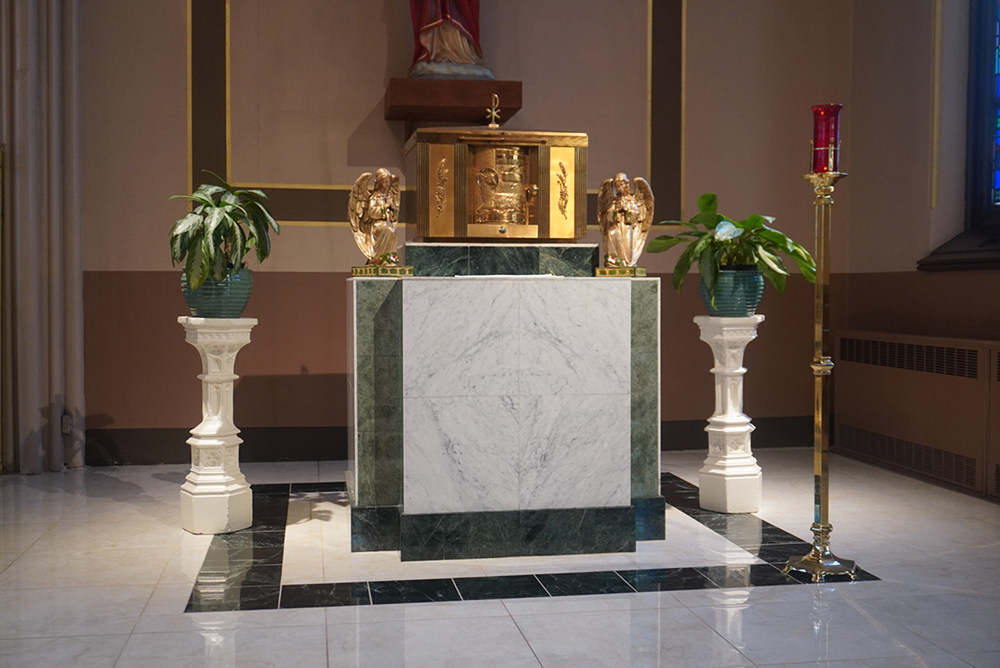
LONG ISLAND CITY — A small church in Long Island City serves around 400 people every Sunday from a hidden treasure: liturgical furnishings once touched by a saint.
St. Mary Church houses an ambo, main altar, baptismal font, and pedestal that the tabernacle rests on built with pieces of the altar used by St. John Paul II to celebrate a Mass at Aqueduct Raceway during his visit to the Diocese of Brooklyn in 1995. Now, the parts of papal history are used daily by Father Christopher Turczany, pastor at St. Mary Church.
The magnitude of using third-degree relics from the popular saint is not lost on him, particularly given his family’s roots in Eastern Europe, and St. John Paul II’s advocacy for the region, Father Turczany told The Tablet.
“There was an affinity there between what he would say, how he acted, and his great interest in presenting a new way of practicing our faith, a new type of spirituality,” he said.
St. John Paul II celebrated Mass at the southeast Queens racetrack on Oct. 6, 1995, with nearly 75,000 people in attendance. Father Turczany had a plaque installed at the back of the church to commemorate the history that is held inside. Given the changing demographics of Long Island City, he explained, there’s been a turnover in parishioners at St. Mary, and the newest members may not be as in touch with its history.
Chris Obcena is one of those new parishioners. He said he feels “much closer to the faith knowing that these pieces were actually used by the pope at one point in time, and now it’s displayed here for everyone.”
April 27 marked the 10th anniversary of the canonization of St. John Paul II, whose journey to sainthood is the fastest in history.
He was the most popular of Church leaders, with Gallup’s final poll before his death showing that 78% of Americans — and 93% of Catholics — ranked him favorably.
“We’re that much closer to God, and that’s part of the reason why the saints’ lives are so interesting personally for me. They go through so much human suffering, but internally, they don’t realize they are going through this metamorphosis or transformation or being holy,” Obcena added.
St. Mary’s altar was reconstructed by D’Ambrosio Ecclesiastical Studios, which specializes in restoring religious properties. Anthony D’Ambrosio and his studio built the original altar for the papal visit, and after the celebration at Aqueduct, they took it apart and put the pieces in storage.
Soon after, they got a call from Father Raymond Schmidt, pastor of St. Mary at the time, requesting that the studio do a little work on the almost 150-year-old church.
When D’Ambrosio came to St. Mary to renovate the church, he “had a very good idea,” Father Turczany recalls. He took the pieces of the altar used by the pope, downsized from the much-larger original, and refitted them to the four items used at St. Mary today.
“He knew this setting would be perfect for this. He wanted to not have it stored but used, and he knew it would fit,” Father Turczany said.
For more than 20 years, Betty Mohammed has been coming to St. Mary, traveling to the church from Ozone Park. While she initially began attending daily due to its proximity to her job, she stayed because of the positivity the church leadership and community provided.
For years, she has known about the connection between the church and the papal saint.
“It’s a blessing. Something that you look at, and it’s like the pope is right there,” Mohammed said.
